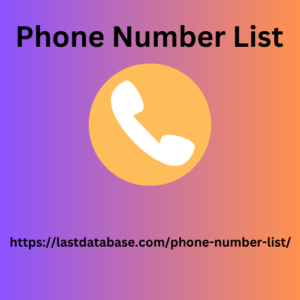Post by account_disabled on Dec 2, 2023 4:54:52 GMT
Analytics When we were given access to website analytics, we got our first real look at how well the site was performing and what we could do to help it run better. By analyzing how visitors use the site (visitor journeys, drop-off points, most visited pages, which pages spend the longest average time on site, etc.) we can start building our on-page strategy. We identified how to simplify navigation to help people find what they are looking for faster. We also felt the need to create clearer calls to action that would shorten the distance from popular landing pages to the most valuable pages on your site.
We also looked at the top-ranking landing pages, and with the keyword data we had access Phone Number List to, we were able to more clearly define why people came to the site and what they expected when they landed on the page. For example, one of the , and visitors enter the website through a series of related short-tail keywords and long-tail keywords. However, they will almost always appear on the product page. By analyzing the visitor journey for this page, we noticed that they leave to try to find more information about the item, as most visitors do not enter the site during the purchase phase of the conversion cycle.

Ever, the location of this supporting information on the website is not immediately obvious. In fact, it’s nearly four clicks away from the product landing page! Obviously, we have to solve this problem and other similar problems we find by doing some fairly simple analysis. Product Pages Product pages are generated based on the global product catalog built into the content management system.
We also looked at the top-ranking landing pages, and with the keyword data we had access Phone Number List to, we were able to more clearly define why people came to the site and what they expected when they landed on the page. For example, one of the , and visitors enter the website through a series of related short-tail keywords and long-tail keywords. However, they will almost always appear on the product page. By analyzing the visitor journey for this page, we noticed that they leave to try to find more information about the item, as most visitors do not enter the site during the purchase phase of the conversion cycle.

Ever, the location of this supporting information on the website is not immediately obvious. In fact, it’s nearly four clicks away from the product landing page! Obviously, we have to solve this problem and other similar problems we find by doing some fairly simple analysis. Product Pages Product pages are generated based on the global product catalog built into the content management system.
